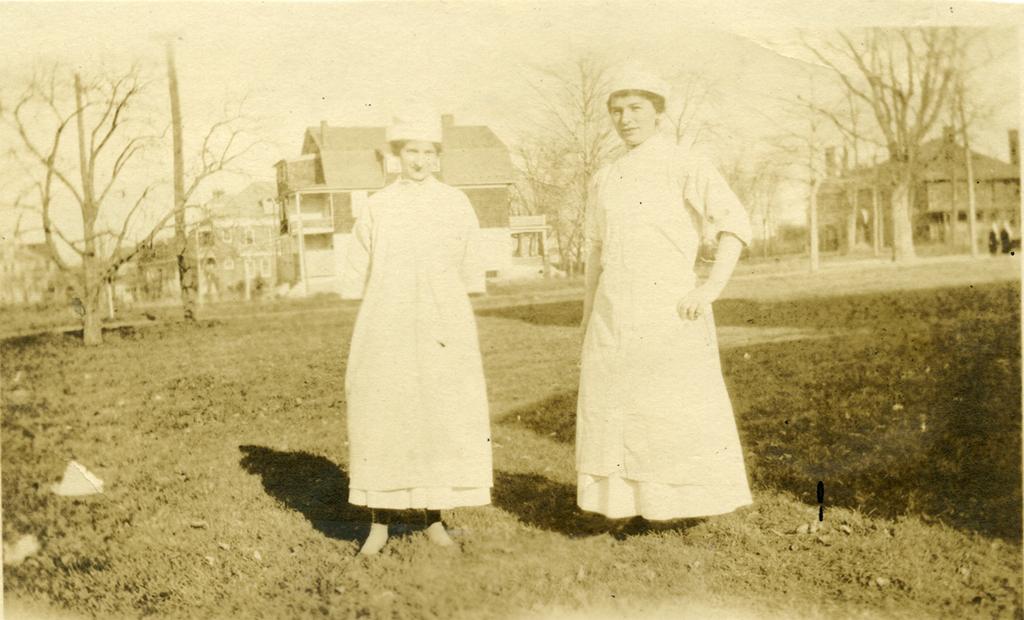Today, in looking at the scholarly publishing sector, equity markets are focused on the European national-level consortial negotiations. If analysts are not surprised at the strong rhetoric about cancelling Big Deal packages that has emerged from the university sectors, they are troubled to see entire nations actually canceling their licenses. They have watched publishing revenue from a major country like Germany disappear all at once from one major publisher’s income statement. And they want to know whether this “contagion” will spread to North America. My view is that, while the germs are circulating, at least in the near term, publishers are unlikely to face a global pandemic.

University libraries have tended to have relatively weak negotiating positions with respect to publishers. They have have felt locked in to renewing materials because they serve as “agents” for faculty members who have much more political weight at universities and yet no direct exposure to the costs of the material they require. Yet libraries have long been frustrated by the ever growing share of their materials budgets devoted to subscriptions from a very small number of publishers. I have tried to help libraries strengthen their position at the negotiating table, in part through efforts to drive greater internal alignment about value which can be acted upon. But, the politics of canceling access to resources has certainly been a constraint on libraries and an advantage to publishers.
It is always risky to try to judge a negotiation from the outside, especially while it is in progress. That said, there are key elements of the European dynamics that are not in dispute. The European countries and consortia that have received attention in recent months for canceling their Big Deal agreements — including the Deal Projekt in Germany, Couperin in France, and Bibsam in Sweden — share certain key elements.
- First, they are all looking for various kinds of open access (OA) Big Deals, flipping from a pay to read model, to an increasing or exclusively pay to publish model. Richard Poynder has some of the best coverage to date of these deals, finding several of them strategically troubling from the academic sector perspective. More on these models in a future post.
- Second, they are national-level consortia, and some, as in the case of Germany’s Deal, claim to speak with a single voice for the entire university sector in a given country.
- Third, they are taking a stronger negotiating posture than we have seen before, driven in part by the strong negotiating approach for which Germany is widely regarded and its ability to capture the attention of university presidents, who in turn provide a degree of political cover beyond what a library might find possible.
In some cases, announced cancellations have seemed to be negotiating tactics by the consortia, while in other cases they are having a more dramatic impact on publisher revenues, in the sense that funds allocated for licenses have been spent on alternative purposes. Will this “contagion” of stronger negotiations and outright cancellations grow into a global pandemic?
My answer is that, regardless of what may happen in Europe, the dynamics in the United States are likely to be quite a bit different. This is not to say that North America is a safe haven for commercial scholarly publishing revenues. Not at all. Broadly speaking, it seems increasingly evident to me that the value of traditional publishing activities, certainly as captured through subscriptions, has plateaued. Downward pressure on publisher revenues is the natural result.
Consortia are emboldened by one another. We have seen this happen in Europe, where Germany’s Deal is carrying the torch for others. And make no mistake, the consortia and university systems globally are paying close attention. Their leadership meet with one another regularly through ICOLC, and there is more informal communication as well. While consortia ultimately strive to represent their members, and notwithstanding the fact that so many of their license agreements are covered by some form of nondisclosure agreement, there is no doubt that they influence one another strategically.
And today, in the Sci-Hub era of rampant piracy, with libraries more directly recommending its use, albeit with a wink, the value of the subscription model is under substantial threat. My fellow Chef Kent Anderson may be right that subscription models add value to those that can maintain them, given the benefits of steady recurring revenue, but the models as they have existed are fading. I side with Joe Esposito in recognizing the not so hidden hand of Sci-Hub – “an unacknowledged reserve army prepared to enter the battle with publishers” – which interferes with publishers’ ability to rely on fairly easy subscription renewals. Put in economic terms, the equilibrium price of journal subscriptions is facing a massive readjustment as piracy eliminates publisher exclusivity.
But the higher education sector in most of North America is very different from Europe, in one key element: North America is as decentralized as Europe is, at a national level, centrally coordinated. While all of UK universities are governed by the same set of research funding incentives, there is no similar common funding policy in the United States or Canada. To the extent the public universities receive public funding, it generally is supported at a state or provincial level, with research funding more commonly allocated through competitive project-level grants. Many states have an array of different public higher education systems — Pennsylvania has two, California has three — and only a subset have established performance-based funding models. Finally, the private not-for-profit sector is strong, such that even if all the publicly funded institutions in the small state of Connecticut were to follow a common model, institutions like Yale, Wesleyan, Connecticut College, and Trinity, would not be impacted. The upshot is that decentralization, for all its benefits, results in no common policy or incentive structure about open access or scholarly communications.
For this reason, we can expect no national-level common negotiating posture in North America, certainly not in the United States. Instead, we must look to other groupings of institutions to understand what might result. Some of these groupings are as large or larger than some European national consortia, so their impact is potentially significant. In the United States, anyway, there are different kinds of systems and consortia, and for the purposes of scholarly publishing we can identify at least two basic archetypes.
One kind of system or consortium includes only large research universities. One well known example is the University of California system, with 10 major research universities, all of which are represented in license negotiations through the strategically sophisticated California Digital Library in its central system president’s office. Another is the Big Ten Academic Alliance, which represents the members of the Big Ten athletic conference plus the University of Chicago at a provostial level, and has developed a robust library program. It is difficult to imagine these kinds of consortia (or the vast majority of their members) walking away from the Big Deal outright. Much as they might wish to strengthen their negotiating position, they are probably more inclined towards trying to flip to a pay to publish model (a hybrid version of which MIT last week announced with the Royal Society of Chemistry) than they are to cancel outright. That said, I am keeping an eye on both these consortial groups and several others like them; a key indicator is whether presidents or provosts become more actively involved in negotiations, as has happened in Germany.
Another kind of consortium includes academic libraries of many types. These include state systems like SUNY in New York, incorporating 64 institutions from community colleges to major research universities; state-supported entities like OhioLINK, which speaks for many private institutions as well as the public university sector; and consortia like Orbis Cascade, which includes nearly every academic institution in the Pacific Northwest states. Some of these systems and consortia use central funds to support their licensing activities, but more often they have allocation formulae for member contributions. These multitype consortia are likely to be the greater source of threat to publisher revenues. After all, even as the Ohio State University, or SUNY’s University at Buffalo, might seek price adjustments in light of the new market reality in the wake of Sci-Hub, the teaching institutions that make up the bulk of these consortia will have to consider whether there is any measurable value left to them in journal subscriptions. There is a real risk to publishers that these consortia will break up, and the revenue from their members will fall accordingly. Models where costs are allocated among members more by historical print spend, especially in states with dynamic higher education systems, may be the first to fold. It appears that this process may already have begun in Florida.
There is another way that the Big Deal is breaking up in North America. Several prominent universities, including a number in Canada driven by exchange rate challenges such as Montreal with Taylor & Francis, decided to cancel selected bundles and rely instead on licenses for a subset of individual titles. This approach may only modestly reduce the price paid to a given publisher, and it may eliminate multi-year inflationary caps, but it is an important harbinger of change. For, having reasserted its ability to select content at a title level, the university is now prepared to cancel with greater granularity, and therefore to negotiate from a stronger position. Rick Anderson first tracked these cancellations comprehensively last year, asking if the wolf has finally arrived, and SPARC has subsequently continued this important tracking work.
So the view from North America is not altogether bleak: the germs may be circulating, and the symptoms should be watched carefully, but no pandemic has yet emerged. Publishers will continue to try to fight piracy. But thus far they have not succeeded, and piracy remains uncontained. Because license agreements typically run three or more years, change is not sudden. From realizing that its negotiating position has improved, to generating the political position to drive change, necessarily takes a consortium some time. Without the looming 2020 European target, or an exchange rate crisis, the urgency is comparatively muted. But a new generation of library leaders is interested in driving change to the system. And, thus we are seeing only the leading edge of change since Sci-Hub came on scene. The next year or two will be telling.
Discussion
22 Thoughts on "Will the European Big Deal Contagion Spread to North America?"
Thoughtful article. One point that could have mentioned is the fact that non-disclosure agreements imposed by publishers make it difficult for libraries to know whether what they are paying is out of line with the norm or not.
Given that many states have “sunshine” laws, not all non-disclosure clauses can be enforced.
Hi Roger
Not all academics are immune to the budgetary problems of their libraries as we know from the fight to get open access. Yes, libraries can traffic light their collections and use other techniques to more effectively manage their fiscal resources. The major rub has been that through all of this, publishers, particularly the largest, have continued to see record profits.
Kent argues that publishers’ cost are due to the value that they bring to the academic community. But that has not seemingly affected their bottom line. This issue is seen more clearly in the current environment where some publishers have been looking at public offerings. The VC community has raised the alarm, not about the cancellations, but whether, as this discussion goes, such is a contagion which will affect the market over which the VC community is licking its chops.
It might be more important for Ithaka to take the side of the academic institutions and work with the publishers to also see how to reduce costs and add value. But then, maybe they would not be an attractive target for an IPO. After all, if such could stop or cure the contagion, both the short term and long term value of a publisher to both academia and the VC community might find common ground
Is it not rather depressing that contagion and infection seem to be the ruling metaphors? One would wish that publishers and learned societies can find a positive route from the current situation, so that the main contributions of publishers are seen in a positive and productive light. Stoutly and single-mindedly defending 40% profit margins may not be the way to go.
One route is to cease publishing marginal journals and then raise the price of needed journals to cover the lost marginal revenue!
Another way to cover the costs of the library is to cut faculty salaries and give that money to the library. By rank, the average was $98,974 for professors, $69,911 for associate professors, $58,662 for assistant professors, $42,609 for instructors, and $48,289 for lecturers. Faculty in 4-year institutions earn higher salaries, on average, than do those in 2-year schools.
Professors in the United States – Wikipedia
https://en.wikipedia.org/wiki/Professors_in_the_United_States
BTW these are for 9 month contracts!
Or one can go the pay for view route. Why should the taxpayer pay for a person to view something that they want to view. No one pays for you or me to go to a movie or out to dinner because we simply want to go. The library could simply provide a link to the site(s) which have articles one wants to read. If one went this route there would be little need for many library services.
Lastly, the publishers can go entirely OA and provide no services other than indexing. OA authors would receive no monetary support from the public trough because I really do not care if someone publishes an article on the dung beetle!
Interesting stuff.
But the higher education sector in most of North America is very different from Europe, in one key element: North America is as decentralized as Europe is, at a national level, centrally coordinated. While all of UK universities are governed by the same set of research funding incentives, there is no similar common funding policy in the United States or Canada.
Surely the proper analogy here would related the USA to Europe as a whole, and the individual US states to European countries? No-one expecting an USA-national subscription cancellations — because there are no USA-national subscriptions to cancel. But even eight years ago we came close to California cancelling Nature, and it’s not hard to imagine similar moves coming to more decisive conclusions in future.
Worth also considering how those institutions and libraries are funded. My understanding is that for many (most?) US institutions, library serials budgets largely come from student tuitions and fees. That’s a big difference from European institutions where governments are largely funding the entire institution.
In the United States … for PUBLIC institutions, it’s a combination of funding sources in many cases and not always so easy to tell whether it is state funding or tuition funding. When it is a specific library materials fee or a gift/endowment – that is clearer … though I don’t know of any library that is fully funded by fees/gifts/endowments. For PRIVATE institutions, it’s tuition, fees, and gifts/endowments.
But, budgets are only a part of the story. The more telling part – to me – is the policy-making question. Whether one looks at the state or national level, the kind of policy-making that one sees in European countries re research is just not that coordinated in the US. Likewise, the institutional accreditation/quality assurance models are quite different.
Hi Tom,
Sorry, what’s the “VC community”?
I believe it stands for “venture capital”
Which is probably the wrong term to use when discussing investors in an IPO for a well-established company.
https://en.wikipedia.org/wiki/Venture_capital
You are probably right David.
Thank you. I tried googling it and got quite a few odd results!
The University of California and Nature were in a battle over Nature’s price increase eight years ago and Nature turned off service at one point and there were near riots in the street as the faculty demanded access be restored. The librarians lost a lot of support and credibility over this action. Too often the faculty and the library are not on the same page when it comes to the access of information. There was a period where Kluwer’s Up to Date Service became very expensive and a number of medical school libraries canceled their subscriptions, But service was soon restored in every case by the Dean of the medical school. Now Up to date is a well established service in nearly every medical school and the annual cost is often more than the entire literature budget of the medical school library. My point is in the US the faculty and students have a major say in what materials are provided to support their research and clinical needs.
I think it is not so clear that this same response would occur now. A quick Twitter skim will find researchers across Europe saying it doesn’t matter if their libraries cancel the subscriptions because they will just use Sci-Hub.
Dan, where did you get your information that Nature turned off our access and there were near riots in the streets? Neither statement is true – Nature continued our access and our faculty leadership was solidly behind our actions; in fact they were central participants in our discussions with Nature, which eventually were amicably resolved.
As to Roger’s larger point – Roger, thanks for your thoughtful summarization of where things stand at present. Yes, the US is very different from Europe, but winds of change are blowing. I can only say “watch this space.”
Most of my information came from the UL’s from four of the big campuses and a number of science faculty that wrote to the UC President asking that certain librarians be fired. The old tenured faculty advisory group were not bothered but many of the nontenured faculty were upset. Several campus administrators pulled back discretionary funding from the library over this issue and related issues.
Dan, I fear that rumors may have gotten out of hand somewhere along the line – I’d like to make sure the Scholarly Kitchen doesn’t become a source for propagating them. There was no loss of library funding over UC’s Nature dispute, nor was anyone at risk of being fired over it (I’m pretty confident that I would have been aware of any letters to the UC President to that effect). Of course due to the global financial crisis, UC did experience significant financial challenges during that period. These challenges have not gone away – the state of public funding for higher education today is well known to all of us.
Relevant to this conversation and what is happening in California, see this recent announcement from UC’s Office of Scholarly Communication:
http://osc.universityofcalifornia.edu/2018/06/championing-change-in-journal-negotiations/
One of the reasons that punctum books moved its operations from Brooklyn, NY to Santa Barbara, CA (adjacent to UC Santa Barbara, and currently affiliated with UCSB Library) in 2014 was because we believe that California, and the UC system more particularly, is the best place in which to contribute to transformative (and collaborative) models of scholarly communication (including open access). It’s true that, in the US context, we are somewhat hampered by the lack of governmental mandates around OA (not counting Obama’s 2013 executive order relative to government-funded research in the Sciences), and we don’t have (as they do in the UK, e.g.) national research councils that oversee research assessment in a uniform way (which is actually a good thing, in my opinion, because it guarantees more autonomy for individual institutions to adopt guidelines for research assessment that can be tailored to their particular mission and objectives/needs of their research communities), so this all means that progress toward more transformative models of scholarly communication in the US context will be more incremental and diffuse, but for sure, California is the space to watch. It’s an honor, in fact, to work alongside UC librarians, who are among the most progressive, committed, and visionary knowledge workers I have ever encountered.
The steep decline in the relative value of journal subscriptions is not solely due to Sci-Hub, and probably not even primarily. Many faculty I talk to still have not heard of Sci-Hub, but every one of them knows to search Google or GoogleScholar for an OA copy of an article the library does not have. And when they do, they find a publisher-policy compliant green or gold OA version on average around half the time now (according to Science-Metrix’s regular tracking of open access availability).
The question may be “who needs a scholarly journal and why”. Physics, way back when, decided that it was important to have a “letters” publication, in the sense of the original idea of “communication”, to get hot ideas out for others and to plant a scholarly “flag” on the territory, like registering a land title. In an internet world, that wild west title claim has expanded into virtual space which can be secured via a block-chain registration. The idea of a “journal” and the “letters” becoming “journals” came in a large part out of the need to get the research stamped by a recognized certifying authority in part, due to promotion/tenure and in part for the need to plumb the idea for those who “read the fine print”. It is the stamp that is the key that journal publishers hold.
“Immunize” against the default certification via alternative paths and the contagion will be controlled. In an increasingly digital world there are a variety of alternatives rather than accepting the default used by evaluators and still not force them to “read and evaluate” the articles as has been suggested. Though there are, today, some sensible departments that do send scholarly materials for evaluation even though the materials have been “published”.



